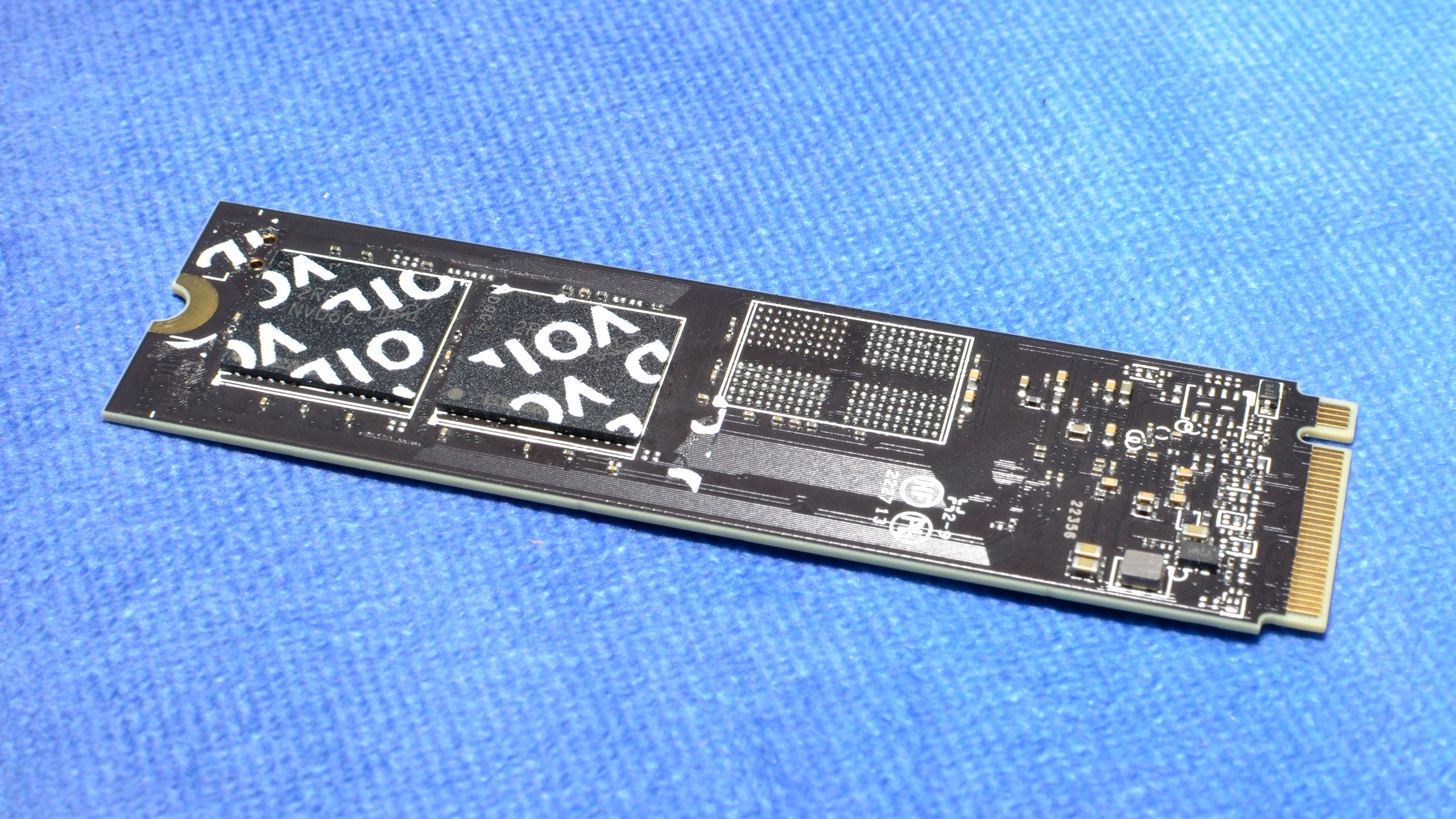
Corsair’s MP700 rivals the best SSDs around, and it’s also one of the few PCIe 5.0 SSDs in the retail market. However, consumers better heed Corsair’s listed requirements and put an M.2 heatsink or cooler on the MP700, as the drive can experience uncontrolled thermal shutdowns if pushed hard enough without one.
Phoronix and TechPowerUp have demonstrated what happens if consumers don’t adequately cool the Corsair MP700. Phoronix encountered malfunction issues in less than three minutes that caused the operating system to generate file system errors, implying that data corruption could result, while TechPowerUp saw thermal shutdowns in less than two minutes. We followed up with Phison, and the company issued the following statement to Tom’s Hardware:
“After carefully reviewing the recent reports from TechPowerUp and Phoronix, Phison would like to acknowledge the issue found in the reviews of products using the new Phison PS5026-E26 controller. We take this matter seriously and are committed to resolving it promptly.
Our firmware engineering teams have already isolated the problem and made the necessary adjustments to the thermal throttle curve within hours of the report. However, the new firmware must undergo Phison’s strict validation process before our partners can release it to customers. Rest assured our partners will notify end-users as soon as the validated update is available.
It is important to note that all E26 SSDs shipped without a heatsink are intended to be used with a heatsink. Most motherboards shipping with PCIe Gen5 enabled also include cooling specifically designed for Gen5 SSDs. We offer the “bare drive” option to allow customers to use their existing cooling products.
We want to emphasize our commitment to providing high-quality products and solutions to our customers and will continue to work diligently to ensure their satisfaction. Thank you for your patience and understanding during this process.” - Phison representative to Tom's Hardware.
It’s no secret that PCIe 5.0 drives can run hot without active or passive cooling. Even Phison, the company that makes the E26 SSD controller for the Corsair SSD in question (and nearly all PCIe 5.0 SSDs, period), has previously stated that enthusiast PCIe 5.0 drives require active cooling. So it’s no coincidence that Phison shipped an active cooler with the first E26-powered drives. Many manufacturers commercialize their PCIe 5.0 SSDs with active coolers or beefy passive heatsinks.
The higher performance from PCIe 5.0 SSDs also means higher power consumption. In the case of the Corsair MP700, the drive has a typical power consumption of up to 10W. It performs within JEDEC’s maximum power limit specification of 11.55W for the M.2 slot. Nonetheless, the MP700 runs hot if left unattended, or your system has poor airflow.
The MP700 has always been accompanied by a bulky cooling solution that resembled Phison’s reference design in early teasers. However, Corsair ultimately decided to scrap the cooler in the retail product. Instead, the company advises consumers to use the integrated M.2 heatsinks from their motherboards or invest in an aftermarket M.2 solution.
Phoronix noted that, without a passive heatsink installed, the MP700 was already causing file system errors while installing tests after a clean Ubuntu 23.04 installation. The Linux publication discovered that the MP700 would fail in under three minutes during benchmarks. The recorded temperatures via HWMON, a hardware monitoring utility, were approximately 87 degrees Celsius. For reference, Corsair rates the MP700 with an operating temperature of up to 70 degrees Celsius, so the drive was overheating. According to the error logs, the PCIe 5.0 SSD controller malfunctions at that temperature, causing the file system errors.
Meanwhile, TechPowerUp’s MP700 shut down after 86 seconds of reads. The SSD exhibited the same behavior after 55 seconds of writing. In both instances, the drive disappeared from the Device Manager in Windows, and the news outlet had to power cycle the system to get the MP700 back online. Surprisingly, the SSD didn’t suffer any data loss.
Phison has acknowledged that it's an issue with the firmware — the drive should throttle in a controlled manner. However, we suspect that the thermal throttle threshold was too conservative. Lowering the value should thermal throttle the drive before reaching the point of a thermal shutdown. Phison has a fix coming, and the new firmware is undergoing validation. The company didn't reveal when it'll be available, but SSD vendors will communicate the latest firmware to consumers when it's ready.






